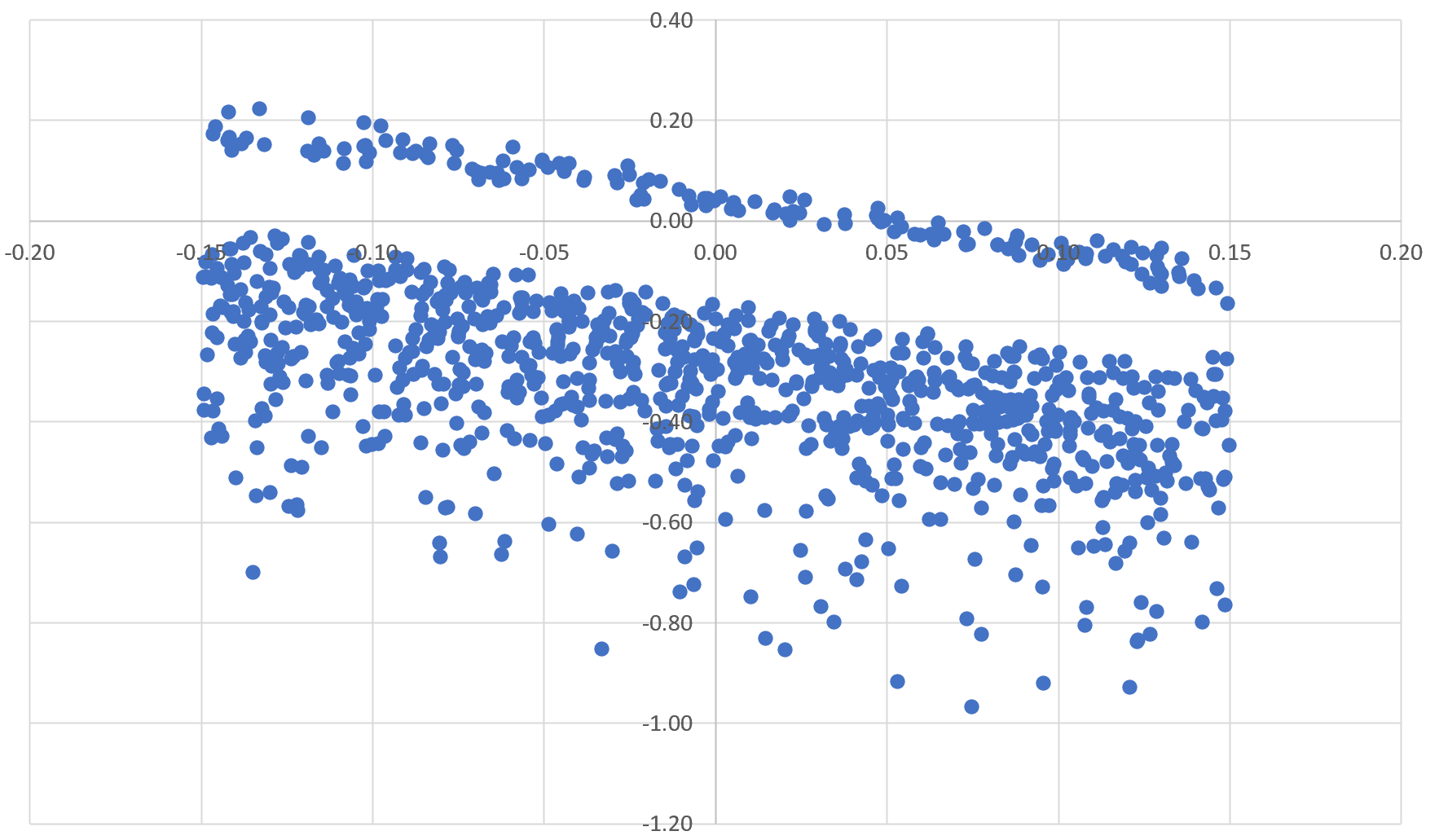The non-trivial zeros of the zeta function $\zeta(s)$, with $0<\Re(s)<1$, can be obtained from the formula $$\zeta(s)=\frac{1}{1-2^{1-s}}\sum_{n=1}^\infty \frac{(-1)^{n+1}}{n^s}.$$
Let us introduce a parametric family of real-valued functions, defined as follows:
$$\phi(\sigma,t; \alpha,\beta,\gamma) = \sum_{n=1}^\infty (-1)^{n+1} \cdot \frac{\cos\big(\gamma +\alpha t+\beta t\lambda(n)\big)}{n^\sigma}$$ with $0<\sigma<1$, $t$ a real number, $\alpha,\beta,\gamma$ three real parameters, and $\lambda(\cdot)$ a real-valued function with logarithmic growth. Elementary computations show that $s=\sigma + i t$ is a complex root of $\zeta(s)$, with $0<\sigma<1$, if and only if
- $\phi(\sigma,t;0,1,0)=0$,
- $\phi\big(\sigma,t;0,1,-\frac{\pi}{2}\big)=0$,
- $\lambda(n) = \log(n)$.
The study of the function $\phi$ on the critical strip $\sigma\in ]0,1[$ reveals very interesting patterns about the distribution of the non-trivial complex roots of $\zeta$, and leads to a simple but quite spectacular generalization of the Riemann Hypothesis. Of course I am not proving anything here, but I offer visual clues (just experimental results) that could potentially lead to a new path to attack this problem and solve the conjecture.
My Question
Are the insights discussed below surprising, helpful, correct (or not), original or not, can be explained, and could it lead to a new path to proving RH? Do they make sense, intuitively speaking? Or am I just rephrasing RH without bringing anything new, except the fact that the context is more general?
Here are my insights
Here $t>0$ and $0<\sigma<1$ is assumed to be fixed, but arbitrary. Consider two functions of the same family as above, $\phi_1(\sigma,t;\alpha,\beta,\gamma_1)$ and $\phi_2(\sigma,t;\alpha,\beta,\gamma_2)$. I created scatterplots as follows: the X-coordinate represents $X_t=\phi_1(\sigma,t;\alpha,\beta,\gamma_1)$ for thousands of values of $t<400$ that satisfy $|\phi_1(\sigma,t;\alpha,\beta,\gamma_1)|<0.15.$ The Y-axis displays the corresponding value $Y_t=\phi_2(\sigma,t;\alpha,\beta,\gamma_2)$. Each $(X_t,Y_t)$ is a point on the scatterplot.
The scatterplots mostly fall in three categories:
- General case: the distribution of points looks rather random, nothing interesting; this is true if $\lambda(n)\neq \log(n)$, even if $\lambda(n)$ is very close to $\log n$ for each $n$.
- Nice case A: there is a band with no points (or at most a very low density of points), if and only if $\sigma\neq \frac{1}{2}$. For this to happen, we must have $\lambda(n)=\log n$. In that case, $(0, 0)$ sits in the middle of that empty band, well separated from the observed data points. This corresponds to a zone with no roots in the case of the $\zeta$ function.
- Nice case B: there is a line attracting tons of points, if and only if $\sigma = \frac{1}{2}$. For this to happens, we must have $\lambda(n)=\log n$. And $(0,0)$ is on that line, surrounded by tons of data points in very close proximity. This corresponds to a zone with tons of roots in the case of the $\zeta$ function.
If $\gamma_1=0$ as for the $\zeta$ function, the line and the empty band are horizontal. If not, they are inclined. The band has an upper and lower bounds; these bounds may not be exactly parallel lines, but curves that tend to diverge very slowly, which is visible when $\sigma$ gets close to $1$. The band's width narrows as $\sigma$ gets closer to $\frac{1}{2}$ and entirely disappears at $\sigma=\frac{1}{2}$.
Of course if we could prove that the width of the band, when $\sigma\neq\frac{1}{2}$, is strictly positive in all cases, then as a corollary, we would have proved RH.
Scatterplots
A few examples are shown below. In all the examples, $\lambda(n)=\log n, \alpha=0.6987,\beta=1.32954,$ $\gamma_1=1.87549987,\gamma_2=-1.554365$. So this is not the RH setting, but another one with the exact same feature. Indeed the pattern in this case is stronger than in the RH case (at least to the naked eye and based on limited data), possibly suggesting that proving the conjecture for this particular case could be less difficult than proving RH.
First chart: $\sigma=0.9$. Inclined band not encompassing the origin. No complex root $s$ with $\Re(s)=\sigma$.
Second chart: $\sigma=0.5$. Inclined line going through the origin. Plenty of complex roots $s$ with $\Re(s)=\sigma$.
Third chart: $\sigma=0.3$. Almost horizontal band not encompassing the origin. No complex root $s$ with $\Re(s)=\sigma$.



